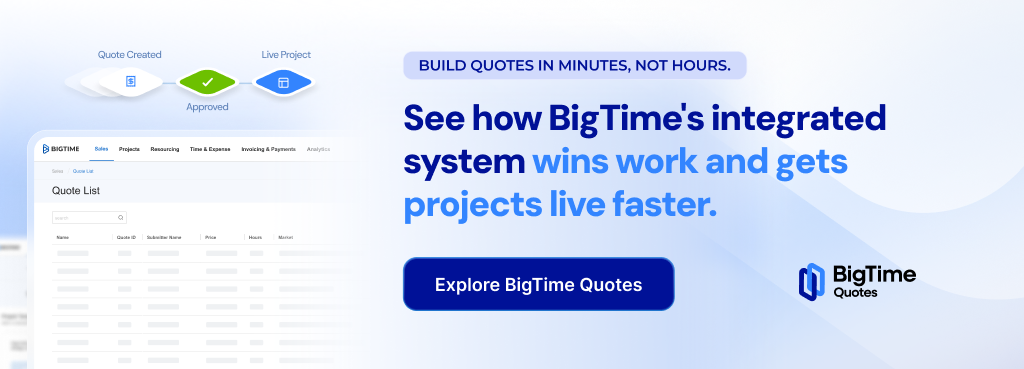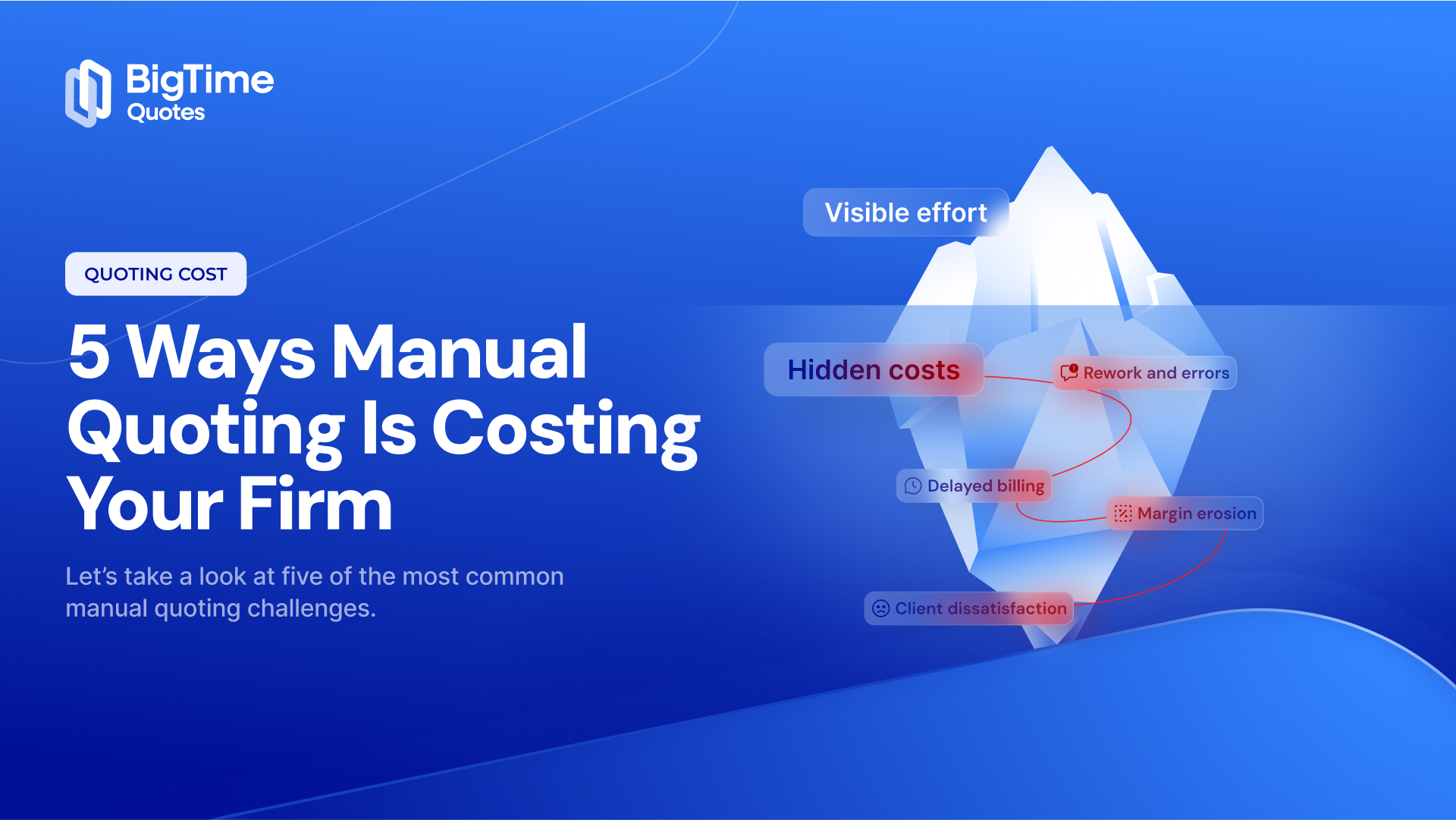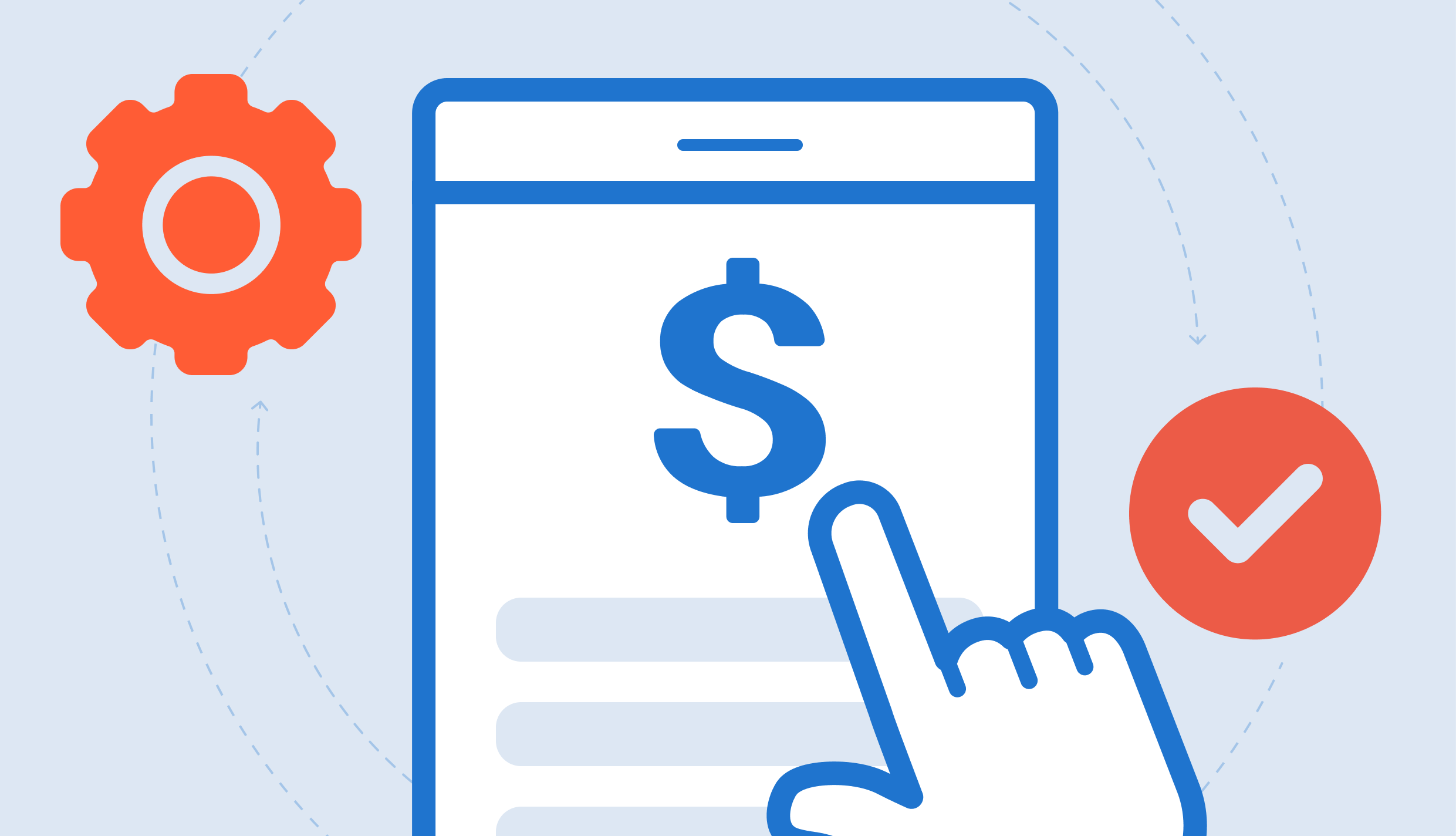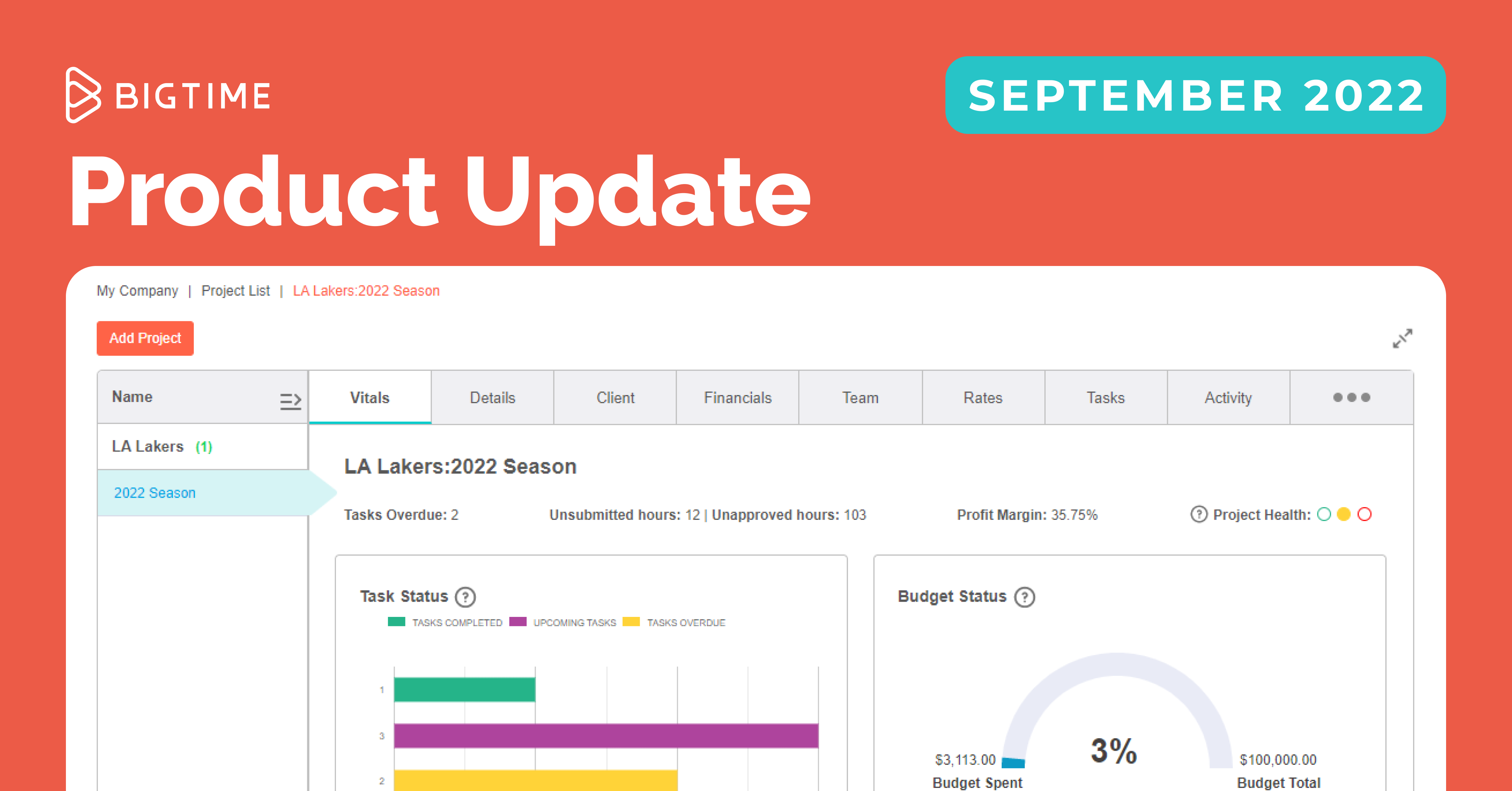Searching spreadsheets for variable rates. Digging through Word docs to find the most updated proposal. Finding mistakes when work is already underway. For most services firms, selling is still an extremely manual process. And for some, manual quoting can work—but when your scaling firm needs to close more complex deals at a more rapid pace, that workflow tends to break down quickly.
Quoting problems would be one thing if they were isolated to the sales process. But the reality is that mistakes during a sale bleed into delivery, turning into missed deadlines, bleeding margins, and unhappy clients.
Done right, quoting can become the foundation of successful delivery. But first, firm leaders need to understand potential pitfalls—and how to avoid them.
Let’s take a look at five of the most common manual quoting challenges, how they drain profits, and how to overcome them to protect business.
1. Slow Time-to-Revenue
Manual quoting forces firms to bounce between systems—copying rates from Excel, re-entering project details from emails, pinging your team for approvals, and manually formatting proposals in Word. This drag-and-drop process is at best inefficient, and at worst an invitation for dangerous mistakes.
When your firm is slow to send out quotes, you’re also slow to win deals and realize revenue. That’s bad news for growing firms that operate on thin margins, where winning or losing a single deal could be the difference between hiring new team members or reducing the workforce.
Slow quoting is problematic, but it’s also common. In fact, over 80% of BigTime customers previously used disconnected tools like Excel or Word for quoting. That leads to sales delays, slower resourcing, and margin leakage.
Because slow quoting is such a widespread challenge, even moderately speeding up your sales process can hugely improve your ability to win deals. The easiest way to do this is by investing in integrated software that will minimize manual work and errors down the road.
2. Higher Risk of Scope Creep and Rework
When quoting isn’t standardized, the likelihood of errors skyrockets. You risk proposals that include outdated rates, vague task descriptions, or even typos—all over which contribute to margin erosion and client disputes.
Many professional services teams lose weeks to misalignment between Sales and Delivery. And mis-scoped engagements don’t only frustrate delivery teams, but also damage client trust and often result in unpaid work. Wasting your team’s time on unbillable work is both frustrating for staff and hugely damaging to your bottom line.
The solution is almost always to standardize your documents and workflows. It’s possible to do some of this work manually (for instance, by saving templates, creating careful naming schemas, and regularly auditing your documentation). To save even more time and reduce the risk of error, consider a quoting solution that automates the entire proposal process.
3. Revenue Leakage From Inaccurate or Incomplete Quotes
Manual processes make it easy to overlook billable services or to underquote complex work. That means you’re either leaving money on the table or eating costs later on.
With no centralized catalog of services or automation to guide pricing, firms frequently forget to include key pieces of work in the quote (like discovery, training, or ongoing guidance). Additionally, variable rates can fall through the cracks—whether that’s a premium for specialized support, or just an adjustment for the project’s complexity.
Without structured, repeatable quoting workflows, it’s impossible to maximize revenue on each deal. Fragmented systems mean that no one gets the full picture, making it tough to implement checks and balances.
Very few firms can afford these oversights. Especially for growing businesses, leaked revenue can turn into serious problems that threaten operations for years.
4. Lack of Visibility Into Pipeline and Forecasting
When quotes live in individual documents and inboxes (or lets face it, even on post-it notes or restaurant napkins), leadership has no clear pipeline visibility. As a result, capacity planning, revenue forecasting, and hiring needs all become difficult to manage or predict.
Poor forecasting can snowball, leading your team to expect resources they won’t actually have—or to plan for the wrong needs. The only real way to solve this problem is by syncing data across your sales and delivery teams. With centralized, real-time data, you can get these insights while they’re actually useful. That means your team has a better chance to plan projects, people, and resources.
5. Inefficient Handoffs and Project Delays
For many firms, it’s typical for Sales to “throw the quote over the fence” to Delivery—sending the finalized deal across teams without context or collaboration. This siloed process is already difficult for teams that are trying to get aligned, but it’s one of the most common moments for human error.
Without an automated quoting process, delivery teams must manually re-enter scope, tasks, and rates. On top of being slow, this process risks copy-and-paste mistakes that can delay work. In worst case scenarios, it can even lead to delivering or billing projects differently than they were sold.
With an automated and integrated solution like BigTime Quotes, firms are able to instantly convert approved proposals into live projects. These projects arrive with pre-configured tasks, budgets, and timelines. That means faster launches, fewer errors, and less friction between Sales and Delivery.
The Solution—Automated Quoting That Puts Profits First
As professional services firms look to scale efficiently, manual quoting simply doesn’t scale. The opportunity cost is just too high.
BigTime’s quoting solution, BigTime Quotes, is purpose-built to solve the problems growing firms face during the sales process. It’s designed to automate quote creation, eliminate rework, and turn every proposal into a springboard for profitable delivery.
Most importantly, BigTime Quotes is built directly into BigTime Delivery, our solution for managing time and expenses, real-time analytics, and all current project data. That means you can transition quotes into live projects and ensure client and project information is also current, accurate, and easy to parse.
Firms that modernize quoting with BigTime see measurable improvements in:
- Quote turnaround time
- Revenue realization
- Margin preservation
- Client satisfaction
Ready to ditch the manual grind? Get your free personalized 20-minute demo to see how BigTime Quotes can help your firm close deals and scale.





